Infection in the lining of the stomach. Helicobacter Pylori: Symptoms, Causes, and Treatment of Stomach Lining Infection
What is Helicobacter pylori and how does it affect the stomach. What are the symptoms of H. pylori infection. How is H. pylori diagnosed and treated. Who is at risk for H. pylori infection. What complications can arise from untreated H. pylori.
Understanding Helicobacter Pylori: The Bacteria Behind Stomach Infections
Helicobacter pylori, commonly abbreviated as H. pylori, is a type of bacteria that infects the stomach lining. This microscopic organism has the ability to colonize and thrive in the harsh acidic environment of the human stomach, leading to various gastrointestinal issues. H. pylori infections are widespread, affecting a significant portion of the global population, yet many individuals remain unaware of their infection due to the absence of noticeable symptoms.
The bacteria’s name, Helicobacter pylori, provides insight into its characteristics:
- “Helico” refers to its spiral or helical shape
- “Bacter” indicates it is a bacterium
- “Pylori” relates to the pylorus, the lower part of the stomach connecting to the small intestine
H. pylori’s unique ability to survive in the stomach’s acidic environment is attributed to its production of an enzyme called urease. This enzyme neutralizes stomach acid in the bacteria’s immediate vicinity, creating a more hospitable environment for its survival and proliferation.
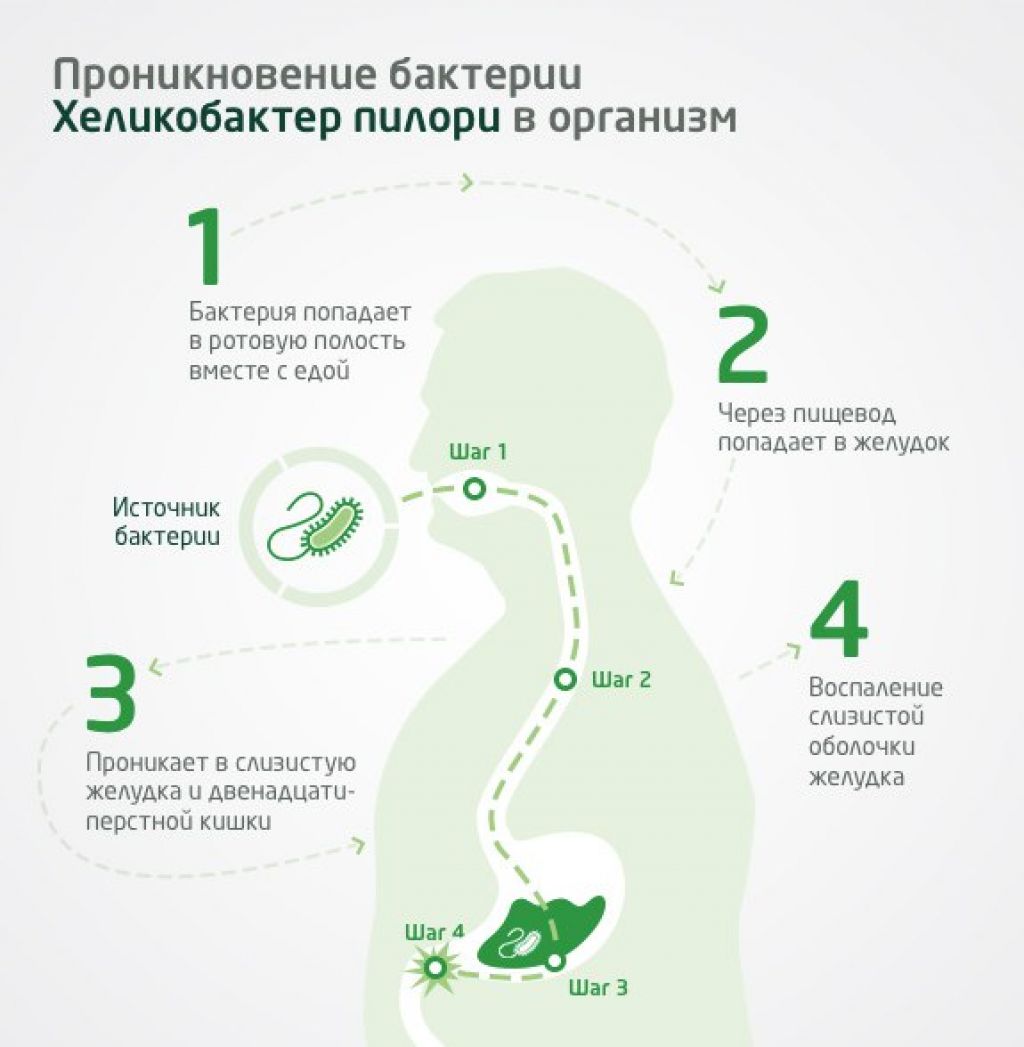
The Impact of H. Pylori on Stomach Health
When H. pylori colonizes the stomach lining, it can lead to various adverse effects on gastric health. The bacteria’s presence can trigger an inflammatory response in the stomach tissue, known as gastritis. In some cases, this inflammation may progress to more severe conditions, including peptic ulcers in the stomach or duodenum (the first part of the small intestine).
How does H. pylori cause damage to the stomach lining? The process involves several mechanisms:
- Urease production: By neutralizing stomach acid, H. pylori weakens the protective mucus layer of the stomach.
- Direct adherence: The bacteria can attach directly to stomach cells, causing irritation and inflammation.
- Increased acid production: H. pylori can stimulate the stomach to produce more acid, although the exact mechanism is not fully understood.
- Immune response: The body’s immune reaction to the bacteria can contribute to tissue damage.
These factors combine to create an environment conducive to ulcer formation and other gastric issues. While not everyone infected with H. pylori will develop ulcers, the bacteria is recognized as a primary cause of peptic ulcers worldwide.

Identifying H. Pylori Infection: Symptoms and Risk Factors
One of the challenges in diagnosing H. pylori infections is that many infected individuals remain asymptomatic. However, when symptoms do occur, they can range from mild discomfort to more severe manifestations. Common symptoms of H. pylori infection include:
- Abdominal pain or discomfort, often described as a gnawing or burning sensation
- Nausea and vomiting
- Loss of appetite
- Unexplained weight loss
- Bloating and excessive burping
- Changes in bowel movements
Is H. pylori infection more prevalent in certain populations? Indeed, several factors can increase an individual’s risk of H. pylori infection:
- Age: The prevalence of H. pylori infection increases with age, with over half of infected individuals in the U.S. being over 50 years old.
- Ethnicity: Certain ethnic groups, including African Americans and Latinos, have higher rates of H. pylori infection.
- Geographic location: H. pylori is more common in developing countries and areas with poor sanitation.
- Living conditions: Crowded living spaces and lack of access to clean water can increase the risk of infection.
- Childhood exposure: Most H. pylori infections are acquired during childhood, though adults can also become infected.
Transmission of H. Pylori: Understanding the Spread
While the exact mechanisms of H. pylori transmission are not fully elucidated, several modes of spread have been identified or proposed. How is H. pylori typically transmitted from person to person?

- Oral-oral route: The bacteria may be spread through saliva, potentially through kissing or sharing utensils.
- Fecal-oral route: Contact with contaminated feces, often due to poor hygiene practices, can lead to infection.
- Contaminated food or water: Consuming food or water that has been contaminated with H. pylori can result in infection.
- Close personal contact: Living in close quarters with infected individuals may increase the risk of transmission.
Understanding these transmission routes is crucial for developing effective prevention strategies, particularly in high-risk populations or areas with limited access to sanitation and clean water.
Diagnosing H. Pylori: Methods and Approaches
Accurate diagnosis of H. pylori infection is essential for appropriate treatment and management. Healthcare providers employ various diagnostic methods to detect the presence of the bacteria. What are the primary diagnostic tests for H. pylori?
- Blood tests: These detect antibodies produced by the body in response to H. pylori infection.
- Stool antigen test: This test looks for H. pylori antigens in a stool sample.
- Urea breath test: This non-invasive test detects the presence of urease, the enzyme produced by H. pylori.
- Endoscopy with biopsy: This procedure allows direct visualization of the stomach lining and collection of tissue samples for analysis.
Each of these diagnostic methods has its advantages and limitations. The choice of test often depends on factors such as the patient’s age, symptoms, and medical history. In some cases, a combination of tests may be used to confirm the diagnosis.

Treatment Strategies for H. Pylori Infection
Once H. pylori infection is confirmed, treatment typically involves a combination of medications aimed at eradicating the bacteria and reducing stomach acid production. What does a standard H. pylori treatment regimen include?
- Antibiotics: Usually, two different antibiotics are prescribed to combat the bacteria effectively.
- Proton pump inhibitors (PPIs): These medications reduce stomach acid production, allowing the stomach lining to heal.
- Bismuth subsalicylate: In some cases, this medication may be added to the regimen to enhance treatment efficacy.
The specific combination and duration of treatment may vary depending on factors such as local antibiotic resistance patterns and individual patient characteristics. Treatment typically lasts for 10 to 14 days, and adherence to the prescribed regimen is crucial for successful eradication of the bacteria.
Are there potential side effects of H. pylori treatment? As with any medication regimen, side effects can occur. Common side effects may include:

- Nausea and vomiting
- Diarrhea
- Headache
- Metallic taste in the mouth
- Abdominal discomfort
Patients should be advised to complete the full course of treatment, even if symptoms improve, to ensure complete eradication of the bacteria and prevent the development of antibiotic-resistant strains.
Long-term Implications of H. Pylori Infection
While many individuals with H. pylori infection remain asymptomatic, untreated infections can lead to various complications over time. What are the potential long-term consequences of chronic H. pylori infection?
- Chronic gastritis: Persistent inflammation of the stomach lining
- Peptic ulcers: Open sores in the stomach or duodenum
- Gastric cancer: H. pylori is classified as a carcinogen and is associated with an increased risk of stomach cancer
- Mucosa-associated lymphoid tissue (MALT) lymphoma: A rare type of stomach cancer
- Nutrient deficiencies: H. pylori can interfere with the absorption of certain nutrients, such as iron and vitamin B12
Given these potential complications, early detection and treatment of H. pylori infection are crucial for maintaining long-term gastric health and preventing more serious conditions from developing.

Prevention and Management of H. Pylori Infection
While completely preventing H. pylori infection may be challenging, especially in high-risk areas, certain measures can help reduce the risk of transmission and reinfection. What strategies can be employed to minimize the risk of H. pylori infection?
- Practice good hygiene: Regular handwashing, especially before meals and after using the bathroom
- Ensure safe food and water: Consume properly cooked foods and drink clean, safe water
- Avoid sharing personal items: Limit sharing of utensils, toothbrushes, and other personal items
- Be cautious when traveling: Take precautions with food and water when visiting areas with high H. pylori prevalence
- Consider screening: In high-risk populations, regular screening for H. pylori may be beneficial
For individuals who have been treated for H. pylori infection, follow-up testing is often recommended to confirm successful eradication of the bacteria. This is typically done several weeks after completing the treatment regimen.

In conclusion, Helicobacter pylori remains a significant global health concern, affecting millions of people worldwide. While many infected individuals may remain asymptomatic, the potential for serious complications underscores the importance of awareness, early detection, and appropriate treatment. By understanding the nature of H. pylori infection, its symptoms, diagnostic methods, and treatment options, individuals and healthcare providers can work together to manage this common yet potentially serious bacterial infection effectively.
Helicobacter Pylori | Johns Hopkins Medicine
What is H. pylori (Helicobacter pylori)?
H. pylori (Heliobacter pylori, pronounced Hel-ee-koh-BAK-ter Pie-LORE-ee) is a type of bacteria that infects your stomach.
It can damage the tissue in your stomach and the first part of your small intestine (the duodenum). This can cause redness and soreness (inflammation). In some cases it can also cause painful sores called peptic ulcers in your upper digestive tract.
H. pylori is common. Many people have it. Most people who have it won’t get ulcers or show any symptoms. But it is a main cause of ulcers.
H. pylori attacks the lining that protects your stomach. The bacteria makes an enzyme called urease. This enzyme makes your stomach acids less acidic (neutralizes them). This weakens your stomach’s lining.
Your stomach cells then have greater risk of being hurt by acid and pepsin, strong digestive fluids. That can lead to sores or ulcers in your stomach or duodenum.
The H. pylori bacteria can also stick to stomach cells. Your stomach can’t protect itself very well. The area gets red and swollen (inflamed).
H. pylori can also get the stomach to make more acid. Health experts don’t fully understand how.
What causes H. pylori infection?
Health experts don’t know for sure how H. pylori infection is spread. They believe the germs can be passed from person to person by mouth, such as by kissing.
It may also be passed by having contact with vomit or stool. This may happen if you:
Who is at risk for H. pylori infection?
You may be at greater risk for H. pylori infection because of:
Your age. Over half the people in the U.S. with the bacteria are over 50 years old.
Your race or ethnicity. Almost half of all African Americans have the bacteria. For people who come to the U.S. from developing countries, at least 50% of Latinos and 50% of people from Eastern Europe have H.
 pylori.
pylori.
Most people first get the bacteria when they are children, but adults can get it too.
What are the symptoms of H. pylori?
Most people have the bacteria for years without knowing it because they don’t have any symptoms. Experts don’t know why.
You may have redness and swelling (inflammation) in your stomach lining. This is called gastritis.
You may get sores or peptic ulcers in your stomach or the first part of your small intestine (duodenum). Ulcer symptoms may include belly or abdominal pain, which can:
Be a dull pain that doesn’t go away
Happen 2 to 3 hours after you eat
Come and go for several days or weeks
Happen in the middle of the night when your stomach is empty
Go away when you eat or take medicines that reduce your stomach acid level (antacids)
Other symptoms of an ulcer may include:
The symptoms of ulcers may look like other health problems. Always see your healthcare provider to be sure.
Always see your healthcare provider to be sure.
How is H. pylori diagnosed?
Your healthcare provider will look at your past health and give you a physical exam. He or she may also use other tests, including:
Blood tests. These check for infection-fighting cells (antibodies) that mean you have the bacteria.
Stool culture. This looks for any abnormal bacteria in your digestive tract that may cause diarrhea and other problems. A small stool sample is collected and sent to a lab. In 2 or 3 days, the test will show if you have any abnormal bacteria.
Breath tests. These can check if there is any carbon after you swallow a urea pill that has carbon molecules. If carbon is found that means that H. pylori has made the enzyme urease. This enzyme makes your stomach acids less acidic (neutralizes them). It weakens your stomach’s mucous lining.
Upper endoscopy, also called EGD (esophagogastroduodenoscopy).
 This test looks at the lining of your food pipe (esophagus), stomach, and duodenum (the first part of your small intestine). It uses a thin, lighted tube or endoscope. The tube has a camera at one end. The tube is put into your mouth and throat. Then it goes down into your esophagus, stomach, and duodenum. Your healthcare provider can see the inside of these organs. A small tissue sample (biopsy) is taken if needed. The tissue sample can show if you have the enzyme urease. It can also check the bacteria that is there.
This test looks at the lining of your food pipe (esophagus), stomach, and duodenum (the first part of your small intestine). It uses a thin, lighted tube or endoscope. The tube has a camera at one end. The tube is put into your mouth and throat. Then it goes down into your esophagus, stomach, and duodenum. Your healthcare provider can see the inside of these organs. A small tissue sample (biopsy) is taken if needed. The tissue sample can show if you have the enzyme urease. It can also check the bacteria that is there.
How is H. pylori treated?
Your healthcare provider will create a care plan for you based on:
Your age, overall health, and past health
How serious your case is
How well you handle certain medicines, treatments, or therapies
If your condition is expected to get worse
What you would like to do
Your healthcare provider may have you take medicine that kills bacteria (antibiotics)./tapeworm-infection-overview-4163644_final-23b225483f984a0c8a6c65f3b07aa87d.png)
Other medicines may include:
h3-blockers. These are used to reduce the amount of acid in your stomach by blocking the hormone histamine. Histamine helps to make acid.
Proton pump inhibitors. These help to keep your stomach from making acid. They do this by stopping the stomach’s acid pump from working.
Stomach-lining protectors. These medicines protect your stomach lining from acid and help kill bacteria.
Helicobacter Pylori in Children
H. pylori is a very common cause of peptic ulcers and gastritis in adults, but it can and does occur in children too.
Call your pediatrician if your child has any symptoms suggestive of gastritis. If your child has been diagnosed with an ulcer or H. pylori gastritis, call a doctor immediately if the following occur as they may be symptoms of gastrointestinal bleeding or ulcer perforation:
Sudden, sharp abdominal pain
Blood in the stool or black feces
Bloody vomit or vomit that looks like coffee grounds
What are the complications of H.
 pylori?
pylori?
If you are infected with the bacteria you can get a painful sore called a peptic ulcer. These sores form in your upper digestive tract.
A very bad ulcer can wear away your stomach lining. It can also cause problems such as:
Bleeding when a blood vessel is worn away
A hole or perforation in your stomach wall
Blockage when the ulcer is in a spot that blocks food from leaving your stomach
H. pylori can also lead to stomach cancer.
What can I do to prevent H. pylori?
Health experts don’t know for sure how the bacteria passes from person to person. But having good health habits (hygiene) can help keep you safe. These habits include:
Washing your hands with soap and water. It is very important to do this after using the bathroom and before eating.
Making sure all food you eat has been cleaned and cooked safely
Making sure that your drinking water is safe and clean
Living with H.
 pylori
pylori
Once you know for sure that you have H. pylori, follow up with your healthcare provider. He or she will do some tests to make sure the bacteria has been removed.
When should I call my healthcare provider?
Call your healthcare provider if your symptoms get worse or you have new symptoms. Call right away if you have symptoms such as bloody vomit, blood in your stools, or black, tarry-looking stools.
Key points
H. pylori is a type of bacteria that infects your stomach.
It attacks your stomach and the first part of your small intestine (duodenum). This can cause redness and swelling (inflammation).
Many people with the bacteria won’t have any symptoms.
It can cause open sores called peptic ulcers in your upper digestive tract.
It can cause stomach cancer.
It may be passed or spread from person to person by mouth, such as by kissing.
 It may also be passed by direct contact with vomit or stool.
It may also be passed by direct contact with vomit or stool.Having good health habits (hygiene) can help protect you.
Next steps
Tips to help you get the most from a visit to your healthcare provider:
Before your visit, write down questions you want answered.
Bring someone with you to help you ask questions and remember what your provider tells you.
At the visit, write down the names of new medicines, treatments, or tests, and any new instructions your provider gives you.
If you have a follow-up appointment, write down the date, time, and purpose for that visit.
Know how you can contact your provider if you have questions.
Gastritis – Better Health Channel
Summary
Read the full fact sheet
- Gastritis is inflammation (irritation) of the stomach lining.

- Common causes include infection, anti-inflammatory medication and alcohol.
- Treatment options include avoiding exposure to known irritants, and medication to reduce the amount of gastric juices.
Gastritis is inflammation (irritation) of the stomach lining. This may be caused by many factors including infection, alcohol, particular medications and some allergic and immune conditions. Gastritis can be either acute (with severe attacks lasting a day or two) or chronic (with long-term appetite loss or nausea). In many cases, gastritis has no symptoms (asymptomatic).
Some forms, including chronic atrophic gastritis, have been associated with an increased risk of stomach cancer. Treatment options include avoiding exposure to known irritants and taking medication to reduce the amount of gastric juices.
Symptoms of gastritis
In many cases, gastritis has no symptoms. Common symptoms can include:
- loss of appetite
- pain in the upper abdomen just under the ribs
- nausea or indigestion
- hiccups
- vomiting
- blood in the vomit
- blood in the bowel actions, if the stomach lining has ulcerated (this turns stools black and is called melaena)
- weight loss.

The stomach
The stomach is an organ of the digestive system, located in the abdomen just below the ribs. Swallowed food is mixed with gastric juices containing enzymes and hydrochloric acid. The lining of the stomach, called the epithelium, is layered with multiple folds. The epithelium is coated with mucus (gastric mucosa) secreted by special glands. Inflammation caused by gastritis occurs in this lining.
Causes of gastritis
Gastritis can be caused by many different factors, including:
- medication such as aspirin and non-steroidal anti-inflammatory drugs (NSAIDS)
- infection with the Helicobacter pylori bacteria, the organism responsible for the majority of stomach and duodenal ulcers
- alcohol
- protracted vomiting
- overproduction of gastric juices, which is a stress response in some people
- the backflow of bile from the small intestine (duodenum)
- some allergic and immune conditions – for example, pernicious anaemia
- exposure to radiation.

Diagnosis of gastritis
Diagnosing gastritis involves a variety of tests, including:
- Endoscopy – a thin flexible tube is threaded down the oesophagus into the stomach. The endoscope is fitted with a small camera so the physician can look at the stomach lining. If the gastric mucosa is reddened, this may indicate gastritis. A biopsy is needed for confirmation.
- Biopsy – small tissue samples are taken during an endoscopy and tested in a laboratory. The pathologist will look for changes, including the presence of inflammatory cells and epithelium damage.
Treatment for gastritis
Treatment for gastritis may include:
- Identifying the cause – once the cause is identified, steps can be taken to avoid exposure. For example, if alcohol is triggering the inflammation, you can abstain or reduce the amount of alcohol you drink. Anti-inflammatory drugs taken to help manage other conditions may need to be stopped or replaced with an alternative.

- Medication – tablets are available to reduce the acid content in the gastric juices. You may need to take these medications for a few weeks or months, depending on your situation.
- Dietary modifications – such as limiting or avoiding alcohol and caffeine, which can irritate the stomach lining.
- No treatment – often gastritis is found by chance during an endoscopy. If Helicobacter pylori is not present, and there are no other features seen on biopsy, there is usually no need to treat the gastritis.
Helicobacter pylori infection
The Helicobacter pylori bacterium causes gastritis and is also responsible for most peptic ulcers. A peptic ulcer is a hole in the lining of the stomach, duodenum or oesophagus. Helicobacter pylori bacterium is thought to be a cause of indigestion and a contributing factor in the development of stomach cancer.
The germs live in the lining of the stomach and the chemicals they produce cause irritation and inflammation. Diagnosis includes a special breath test to check for gaseous by-products of the bacteria. Treatment includes a combination of different antibiotics, followed by breath tests to make sure the medication has worked.
Diagnosis includes a special breath test to check for gaseous by-products of the bacteria. Treatment includes a combination of different antibiotics, followed by breath tests to make sure the medication has worked.
Where to get help
- Your doctor
- NURSE-ON-CALL Tel. 1300 60 60 24 – for expert health information and advice (24 hours, 7 days)
- Gastroenterologist
Things to remember
- Gastritis is inflammation (irritation) of the stomach lining.
- Common causes include infection, anti-inflammatory medication and alcohol.
- Treatment options include avoiding exposure to known irritants, and medication to reduce the amount of gastric juices.
- The Centre for Digestive DiseasesExternal Link, Sydney, Australia.
- Urea breath test [patient information online], The Centre for Digestive Diseases, Sydney, Australia. More information hereExternal Link.
This page has been produced in consultation with and approved
by:
Helicobacter pylori infection: causes, symptoms and treatment
Content
- 1 Helicobacter pylori infection
- 1.
 1 What is Helicobacter pylori infection?
1 What is Helicobacter pylori infection? - 1.2 Definition, pathogen, distribution
- 1.3 Causes of Helicobacter pylori infection
- 1.4 Risk factors, transmission of infection
- 1.5 Symptoms of Helicobacter pylori infection
- 1.6 Diagnosis, clinical manifestations
- 1.7 Complications of Helicobacter pylori infection
- 1.8 Peptic ulcers, gastritis, gastric cancer
- 1.9 Diagnosis of Helicobacter pylori infection
- 1.10 Research methods, tests for Helicobacter pylori
- 1.11 Treatment of Helicobacter pylori infection
- 1.12 Antibacterial therapy, proton pumping inhibitors, dietary regimen
- 1.13 Prevention of Helicobacter pylori infection
- 1.14 Related videos:
- 1.15 Q&A:
- 1.15.0.1 How can one get Helicobacter pylori infection?
- 1.15.0.2 What symptoms accompany Helicobacter pylori infection?
- 1.15.0.3 How to treat Helicobacter pylori infection?
- 1.
Helicobacter pylori infection is a common disease caused by the bacterium Helicobacter pylori, which lives in the lining of the stomach. The article discusses the main causes, symptoms, diagnosis and treatment of this infection. Learn how to detect Helicobacter pylori and how to avoid complications.
The article discusses the main causes, symptoms, diagnosis and treatment of this infection. Learn how to detect Helicobacter pylori and how to avoid complications.
Helicobacter pylori infection is one of the most common human bacterial infections. It affects the gastrointestinal tract and can lead to various diseases.
The main cause of Helicobacter pylori infection is transmission of the bacterium through contact with infected people or ingestion of uncleaned food. The bacterium enters the stomach, overcomes its acidic environment and begins to multiply, destroying the gastric mucosa and causing inflammation.
Symptoms of Helicobacter pylori infection can be varied and include abdominal pain, heaviness after eating, heartburn, nausea, vomiting, loose stools, and morning sickness. However, in a few percent of infected people, the infection is asymptomatic and can only be detected through special studies.
Treatment of Helicobacter pylori infection includes antibiotics, drugs that reduce stomach acid, and probiotics to normalize the microflora. Treatment should be prescribed only by a doctor after conducting the necessary studies and establishing an accurate diagnosis. Therefore, when characteristic symptoms appear, you should seek medical help.
Treatment should be prescribed only by a doctor after conducting the necessary studies and establishing an accurate diagnosis. Therefore, when characteristic symptoms appear, you should seek medical help.
What is Helicobacter pylori infection?
Helicobacter pylori infection is a bacterial disease caused by the microorganism Helicobacter pylori. It can affect the human gastrointestinal tract, causing various pathological conditions.
The main route of transmission of Helicobacter pylori infection is the fecal-oral route. It can be transmitted through contaminated water and food, as well as contact with contaminated objects or hands. The risk of infection also increases with close contact with infected people.
Helicobacter pylori infection can lead to various diseases, including chronic gastritis, gastric and duodenal ulcers, gastric cancer, and ventricular lymphoma. However, not all infected people develop symptoms or diseases. Long-term infection in the stomach can lead to inflammation of the mucous membrane, which can lead to additional health problems.
Various methods are used to diagnose Helicobacter pylori infection, including blood, breath, and tissue tests. Treatment of the infection involves a combination of antimicrobials and drugs that reduce stomach acid production. It is important to get treatment to prevent complications and reduce the risk of developing other diseases.
Definition, pathogen, distribution
Helicobacter pylori infection is a disease that causes chronic inflammation of the lining of the stomach and duodenum. It is caused by the bacterium Helicobacter pylori , which infects the human gastrointestinal tract.
The causative agent of infection Helicobacter pylori is a gram-negative spiral bacterium that is able to survive in the acidic environment of the stomach due to its specific structure. It is able to move with the help of drums and arrows along the surface of the mucous membrane, penetrate into its deep layers and attach to epithelial cells.
Spread of the bacterium occurs through the fecal-oral route, that is, through contact with contaminated feces on food, water or personal items. It is also transmitted from person to person during upbringing. The bacterium can survive in the external environment for several days, so infection through contaminated objects and surfaces is possible. Infection most often occurs in childhood, but can occur at any age.
It is also transmitted from person to person during upbringing. The bacterium can survive in the external environment for several days, so infection through contaminated objects and surfaces is possible. Infection most often occurs in childhood, but can occur at any age.
Causes of Helicobacter pylori infection
Helicobacter pylori infection results from human infection with the bacterium Helicobacter pylori. Transmission of infection occurs through contact with contaminated objects, food and water. The pathogen can be found in the saliva, urine, feces, and other secretions of an infected person.
The risk of infection increases with contact with infected people, especially in conditions of poor hygiene. Children and people living in countries with unfavorable sanitary and hygienic conditions are at increased risk.
Age and genetic predisposition may also increase the likelihood of infection. The infection is more often diagnosed in young and middle-aged people, but it can also occur in children. Children whose parents already have Helicobacter pylori infection are at greater risk of infection.
Children whose parents already have Helicobacter pylori infection are at greater risk of infection.
Living conditions such as poor sanitation, poor drinking water quality, poor sanitation, poor hygiene also influence the development of infection.
Risk factors, transmission
Risk factors
- Contact with infected people: Helicobacter pylori infection is usually transmitted through sexual contact, so sexual partners of those infected are at increased risk of infection.
- Poor hygiene: Improper handwashing, sharing personal hygiene items (eg towels, toothbrushes) can contribute to the transmission of bacteria.
- Poor drinking water and food quality: Poor quality food and contaminated water can be sources of infection.
- Poor hygiene: living in unhygienic conditions, lack of access to clean water and lack of basic hygiene can increase the risk of infection.
- Weakened immunity: people who are immunocompromised, such as patients with HIV infection or receiving immunosuppressive therapy, are more susceptible to infection.

Transmission of infection
- Oral-fecal route: The main route of transmission of Helicobacter pylori is oral (by mouth). The bacteria can enter the body through contaminated water or food, or through contact with the feces of an infected person.
- Airborne droplets: Sometimes the infection can be transmitted through droplets when coughing, sneezing or talking near an infected person.
- Vertical transmission: bacteria can be passed from mother to child during pregnancy or childbirth.
Symptoms of Helicobacter pylori infection
Stomach pain and discomfort: The main symptom of Helicobacter pylori infection is discomfort or pain that occurs in the upper abdomen. Patients may experience burning, bursting or dull pain after eating or on an empty stomach.
Dyspepsia: Helicobacter pylori infection can cause dyspeptic symptoms such as heartburn, regurgitation, belching and abdominal heaviness.
Flatulence and bloating: patients with Helicobacter pylori infection may suffer from excessive gas and bloating. They may experience a feeling of fullness, gases may pass through the mouth or anus, which can cause discomfort and social inconvenience.
Blood in stool: Sometimes a Helicobacter pylori infection can cause blood in the patient’s stool. Blood may be visible in the form of hemorrhages or may not be visible, so it is important to pay attention to changes in the stool and see a doctor if these symptoms are present.
Other symptoms: Helicobacter pylori infection may also be accompanied by other symptoms such as nausea, vomiting, morning sickness, loss of appetite, unexplained weight loss or gain, anemia, fatigue and dizziness.
Diagnosis, clinical manifestations
Diagnosis
Diagnosis of Helicobacter pylori infection includes several methods that allow you to determine the presence of bacteria in the patient’s body. One of the main methods is gastroscopy with taking biopsy material for further research. A biopsy allows you to determine the presence of bacteria in the mucous membrane of the stomach and duodenum.
One of the main methods is gastroscopy with taking biopsy material for further research. A biopsy allows you to determine the presence of bacteria in the mucous membrane of the stomach and duodenum.
Clinical manifestations
Helicobacter pylori infection can present with symptoms ranging from mild discomfort to severe pathology. The main clinical manifestations of the infection are pain and discomfort in the stomach, heartburn, nausea and vomiting after eating, decreased appetite and weight loss.
In addition, infection can lead to the development of gastric and duodenal ulcers, chronic gastritis, pancreatitis and other pathological conditions. In some patients, the infection may be asymptomatic, making diagnosis difficult and delaying treatment.
Complications of Helicobacter pylori
Helicobacter pylori infection can lead to the development of various complications that require additional intervention and treatment.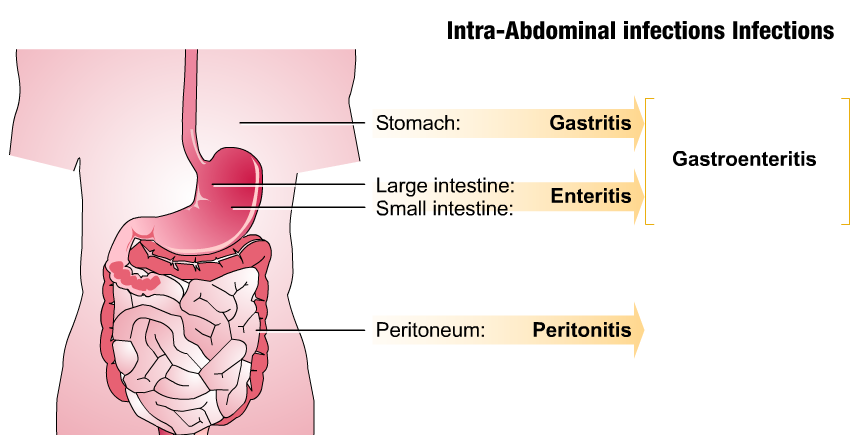
One of the most common complications is peptic ulcer. The infection can lead to inflammation of the lining of the stomach or duodenum and cause an ulcer to form. In this case, there are pains in the abdomen, heartburn, vomiting, blood impurities in the feces. The complication requires full treatment, including antibiotic therapy and drugs that reduce acid production.
Other complications include the development of gastric cancer or gastric lymphoma. Helicobacter pylori infection can lead to a long-term inflammatory process, which over time can turn into a cancerous process or lead to the development of malignant lymphomas. To prevent these complications, treatment of the infection and regular examination of the gastrointestinal tract are recommended.
Peptic ulcers, gastritis, gastric cancer
Helicobacter pylori infection can lead to various stomach disorders. One of the most common is peptic ulcer. This is a chronic disease in which ulcers form on the mucous membrane of the stomach or duodenum.
In the presence of Helicobacter pylori infection in the body, inflammation of the gastric mucosa occurs. This condition is called gastritis. It is accompanied by symptoms such as pain in the epigastric region, nausea, vomiting, loss of appetite and dyspepsia.
If gastritis is not treated, it can progress to stomach cancer. Helicobacter pylori infection is one of the main causes of this neoplastic disease. Stomach cancer usually has no symptoms for a long time, and if there are manifestations, they often appear in the later stages of the disease.
For the prevention and treatment of peptic ulcers, gastritis and stomach cancer, it is necessary to carry out complex therapy, including antibiotic therapy to destroy Helicobacter pylori, as well as correction of the diet and treatment of concomitant symptoms.
Diagnosis of Helicobacter pylori infection
Diagnosis of Helicobacter pylori infection is an important step, as it allows you to determine the presence or absence of this bacterium in the patient’s stomach.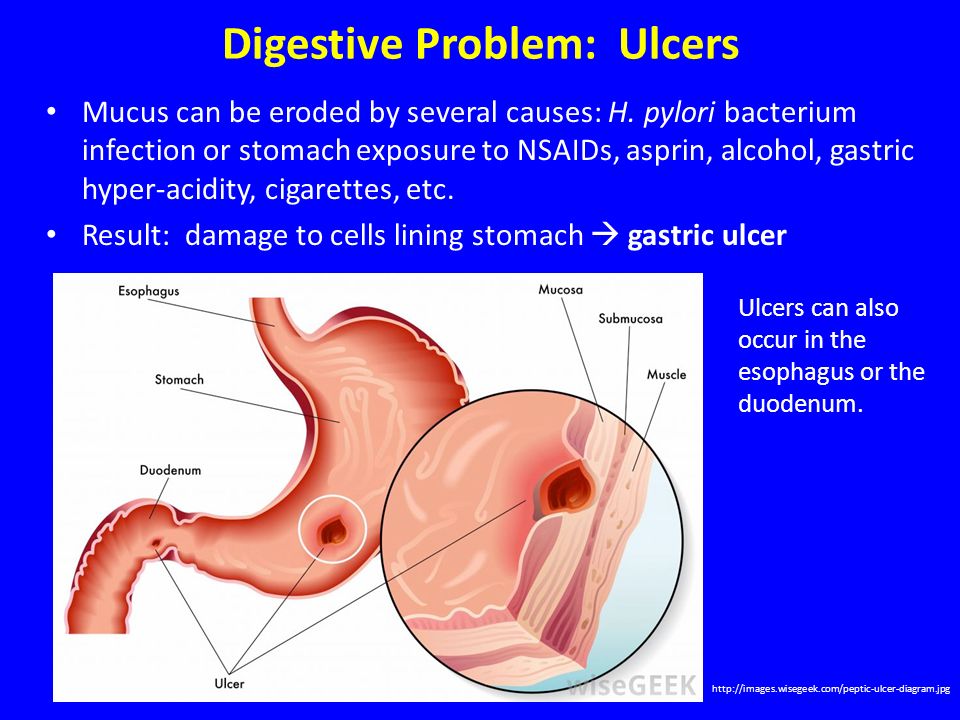 For this, various methods are used, which can be both non-medical and medical.
For this, various methods are used, which can be both non-medical and medical.
One of the most common diagnostic methods is a breath test for the presence of Helicobacter pylori. During it, the patient is asked to drink a special solution with a carbon isotope, which is then metabolized by Helicobacter pylori, thus releasing CO2, which can be detected in exhaled air.
Another method of diagnosis is the examination of gastric contents for the presence of Helicobacter pylori. To do this, an endoscopic examination is carried out, in which a thin tube with a light guide and a video camera is inserted into the patient’s stomach. During this procedure, the doctor takes a sample of stomach contents for later examination under a microscope.
For a more accurate and detailed diagnosis, histological examination methods are also used, in which a biopsy of the gastric mucosa is examined under a microscope. You can also use immunological methods, such as immunohistochemical, enzyme immunoassay or immunoelectrophoresis studies to detect antibodies to Helicobacter pylori.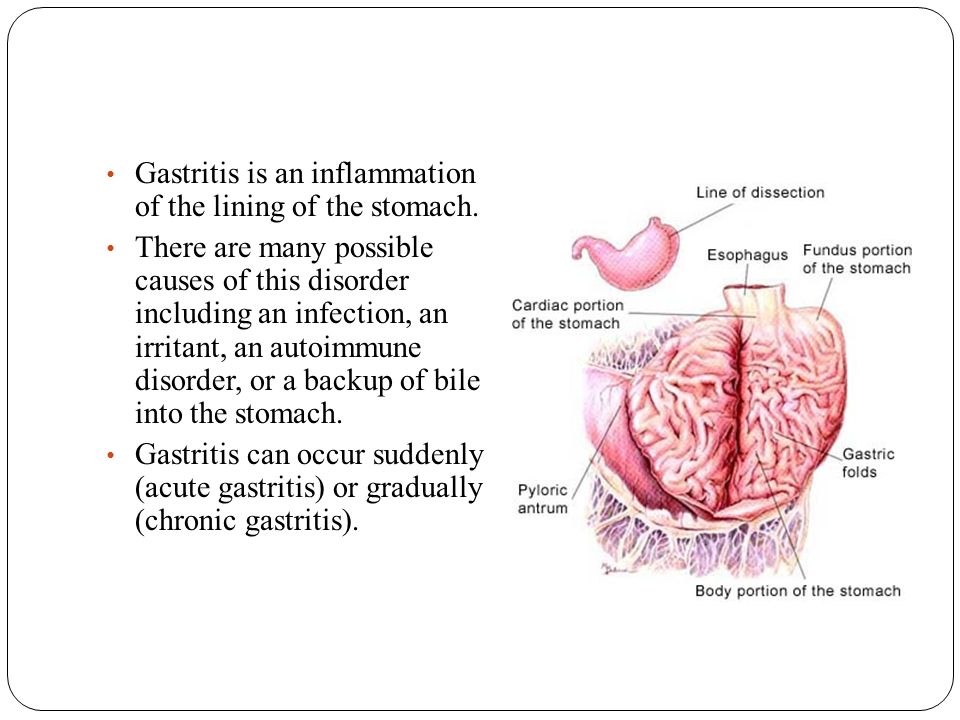
In some cases, additional diagnostic tests may be required, such as blood tests for antibodies, and nuclear magnetic resonance (MRI) or computed tomography (CT), which provide a more detailed picture of the state of the gastrointestinal tract.
Test methods, tests for Helicobacter pylori
Various methods and tests are available for diagnosing and detecting Helicobacter pylori infection. They allow you to determine the presence of bacteria and evaluate its activity, as well as monitor the effectiveness of treatment.
One of the main research methods is gastroscopy. This is an invasive procedure in which a doctor uses a special instrument to examine the inside of the stomach and duodenum. During gastroscopy, a biopsy of the mucous membrane can be taken for subsequent testing for the presence of Helicobacter pylori.
Non-invasive methods are also used for neurological examination and detection of Helicobacter pylori. One of them is the analysis of feces for the Helicobacter pylori antigen. This test is based on the determination of certain proteins that the bacterium secretes. The advantage of this test is its simplicity and safety for the patient.
This test is based on the determination of certain proteins that the bacterium secretes. The advantage of this test is its simplicity and safety for the patient.
Another non-invasive method is the breath test, which detects the presence and activity of Helicobacter pylori. The patient is asked to drink a special substance that contains carbon. If the bacterium is present in the stomach, then it secretes certain metabolic products that can be found in the exhaled air.
There are also blood tests that can detect the presence of antibodies to Helicobacter pylori. However, they can give false positive results, so they are usually used in combination with other research methods.
Treatment of Helicobacter pylori infection
Treatment of Helicobacter pylori infection is an important step in the fight against this bacterium. It is aimed at eliminating the pathogen and preventing the development of complications and the recurrence of infection.
The primary treatment for Helicobacter pylori infection is combination antibiotic therapy. To do this, special combinations of drugs are used, which include antibiotics, drugs to reduce the acidity of the stomach and drugs that improve the protective properties of the gastric mucosa.
To do this, special combinations of drugs are used, which include antibiotics, drugs to reduce the acidity of the stomach and drugs that improve the protective properties of the gastric mucosa.
The Helicobacter pylori treatment regimen may include the simultaneous use of several antibiotics such as amoxicillin, clarithromycin or metronidazole in combination with proton pump inhibitors such as omeprazole, esomeprazole or lantoprazole.
A follow-up study is recommended after completion of a course of antibiotic therapy to ensure that the infection has been successfully cleared. If necessary, repeated treatment may be prescribed.
Antibacterial therapy, proton pumping inhibitors, dietary regimen
Antibacterial therapy is the main treatment for Helicobacter pylori infection. It involves the use of a combination of several antibiotics, such as amoxicillin, clarithromycin, and metronidazole. In addition, a drug that inhibits Helicobacter pylori protein synthesis can be used.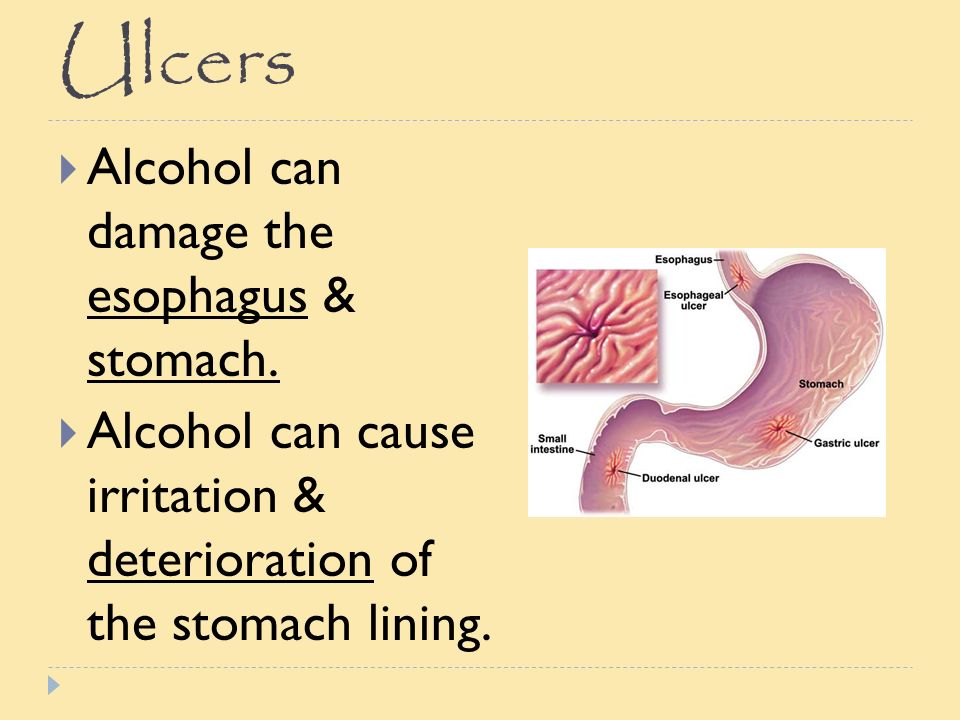 The course of antibiotic therapy usually lasts one to two weeks.
The course of antibiotic therapy usually lasts one to two weeks.
proton pumping inhibitors (PPIs) are an important group of drugs used in Helicobacter pylori infections. They are designed to reduce the acidity of gastric juice, which helps to heal the ulcer and improve the patient’s condition. Proton-pumping inhibitors include omeprazole, lansoprazole, and others.
An important part of the treatment of Helicobacter pylori infection is diet . It is recommended to follow a diet that excludes spicy, fatty and acidic foods, as well as alcohol and nicotine. Patients are advised to eat food in small portions and regularly. It is also advisable to avoid overeating and eating before bed. Much attention should be paid to the use of anti-inflammatory drugs, as they can contribute to the development of ulcers and aggravate the patient’s condition.
In addition, the diet of a patient suffering from Helicobacter pylori infection should be rich in vitamins and minerals. The diet should contain fresh vegetables and fruits, healthy cereals, store and fish, dairy products rich in calcium.
The diet should contain fresh vegetables and fruits, healthy cereals, store and fish, dairy products rich in calcium.
Prevention of Helicobacter pylori infection
Helicobacter pylori infection is widespread and can lead to the development of various diseases of the gastrointestinal tract, so it is important to take measures to prevent it.
One of the important aspects of prevention is hygiene. Wash your hands thoroughly before eating, after going to the toilet and after contact with dirt. This will help prevent Helicobacter pylori infection.
Pay attention to eating conditions. It is recommended to eat food in small portions, do not overeat and avoid hasty eating. This will reduce the chance of developing a Helicobacter pylori infection.
It is also worth paying attention to personal hygiene while traveling. Avoid drinking water from unknown sources, use bottled or boiled water. It is also recommended to avoid taking ice from unfamiliar sources.
By following simple prevention guidelines, you can reduce your risk of contracting Helicobacter pylori infection and prevent possible complications.
Related videos:
Q&A:
How can you get Helicobacter pylori infection?
Helicobacter pylori infection is transmitted through dirty hands, contaminated food or water, and through saliva or other fluids containing bacteria.
What symptoms accompany Helicobacter pylori infection?
Symptoms of Helicobacter pylori infection may include stomach pain, nausea, vomiting, heartburn, borborygmi, loss of appetite, and general deterioration.
How to treat a Helicobacter pylori infection?
Treatment of Helicobacter pylori infection involves the use of a combination of antibiotics and drugs that reduce the acidity of the stomach. It can last from several weeks to several months depending on the severity of the infection.
It can last from several weeks to several months depending on the severity of the infection.
Gastritis of the stomach: symptoms, signs and treatment
Gastritis is a general term that combines several pathological conditions characterized by inflammation and degeneration of the gastric mucosa.
The mucous membrane covers the entire surface of the stomach and plays an important role in digestion. Its glands produce gastric juice, the enzyme pepsin, hydrochloric acid, lipase, hormone-like components, mucus and bicarbonate. These substances are responsible for the breakdown of proteins and fats, protect the body from pathogenic bacteria, and activate metabolic processes.
When inflamed, the mucosa produces less acid, enzymes, mucus and other substances that are necessary for the proper functioning of the digestive tract. There is a risk of developing gastritis.
Gastritis can occur in acute and chronic form. It is important to consult a doctor in time to get a diagnosis and treatment, to prevent complications.
Forms and complications of gastritis
In the absence of adequate and timely treatment, gastritis can cause complications. These include:
- Gastric ulcer. Peptic ulcers affecting the lining of the stomach or duodenum. Peptic ulcer provokes excessive use of painkillers (NSAIDs), and gastritis caused by H. pylori. It is difficult to say where gastritis ends, especially with erosives, and peptic ulcer begins. Apparently, these are different forms of the same process.
- Atrophy of the gastric mucosa – atrophic gastritis. Occurs due to thinning of the mucosa, the formation of fibrosis (microscars) of the membrane in chronic gastritis. With atrophy, the number of active cells of the gastric mucosa that produce enzymes and acid decreases. The absorption of certain vitamins is impaired. Atrophic gastritis is a risk factor for oncological transformation, therefore it requires special attention.
- Gastric bleeding in erosive gastritis and ulcers.
 It is characterized by irregular breathing, weakness, dizziness, blood in the vomit and stool, black stools, pallor of the skin. If these symptoms appear, you should immediately seek medical help.
It is characterized by irregular breathing, weakness, dizziness, blood in the vomit and stool, black stools, pallor of the skin. If these symptoms appear, you should immediately seek medical help. - Anemia. Most often occurs due to acute (as described above) or chronic blood loss, for example, with multiple recurring erosions of the stomach. Studies show that H. pylori-associated gastritis and autoimmune gastritis can interfere with the body’s absorption of iron and vitamin B12 from food, which can also cause anemia.
- Vitamin B12 deficiency and pernicious anemia (pernicious anemia). In autoimmune gastritis, a certain protein is not produced that helps absorb vitamin B12, which is necessary for the production of red blood cells and nerve cells. Insufficient absorption of vitamin B12 can lead to the development of pernicious anemia. The same changes occur in the advanced stage of atrophic gastritis of any origin.
- Cancer of the stomach. Chronic gastritis increases the likelihood of developing benign or malignant neoplasms in the gastric mucosa.
 For example, H. pylori-associated gastritis increases the risk of gastric mucosal adenocarcinoma and lymphoma.
For example, H. pylori-associated gastritis increases the risk of gastric mucosal adenocarcinoma and lymphoma.
Causes and risk factors of gastritis
- Helicobacter pylori bacterial infection. It is one of the most common types of infections, the infection is transmitted by the fecal-oral route, for example, through contaminated food and water. For the development of gastritis, the presence of Helicobacter pylori infection alone is not enough. It is believed that vulnerability to bacteria is inherited or occurs due to improper lifestyle (smoking, poor diet), medications.
- Pain medications (non-steroidal anti-inflammatory drugs, NSAIDs). Regular and excessive use of aspirin, ibuprofen or naproxen can cause both acute and chronic gastritis, their toxic effects reduce the production of the main protectors of the gastric mucosa. To distinguish this situation from other types of gastritis, it is called NSAID gastropathy.
- Alcohol. Irritates and gradually destroys the gastric mucosa, exposing it to the aggressive effects of gastric juice.
 Alcohol most often provokes acute gastritis.
Alcohol most often provokes acute gastritis. - Age. Older people have an increased risk of developing gastritis, as the lining of the stomach thins with age. The elderly are also most vulnerable to infections (H. pylori) or autoimmune disorders.
- Stress. Severe stress associated with injuries, burns, major operations and infections can trigger acute gastritis.
- Exposure to radiation or radiotherapy (due to another medical condition).
- Bile reflux after gastric resection.
- Allergy to foods such as cow’s milk and soy (especially in children).
- Autoimmune diseases. As a result of autoimmune processes in the body, antibodies are produced that attack the cells that form the lining of the stomach. Autoimmune inflammation occurs, the functions of the protective mucosal barrier decrease. Gastritis associated with autoimmune disorders is called autoimmune gastritis. It is more common in people with other autoimmune disorders, including Hashimoto’s disease and type 1 diabetes.
 Autoimmune gastritis can also be associated with vitamin B12 deficiency.
Autoimmune gastritis can also be associated with vitamin B12 deficiency. - Other diseases. The risk of gastritis may be increased by other pathological conditions, including Crohn’s disease, sarcoidosis, parasitic infections, HIV/AIDS.
Symptoms of gastritis
- Heaviness in the stomach
- Heartburn
- Bloating
- Nausea
- Vomiting
These symptoms may appear or worsen during or shortly after eating. But most often gastritis is asymptomatic.
Sometimes the term “gastritis” is erroneously used to describe any symptoms of pain or discomfort in the upper abdomen, in most cases it is a manifestation of functional dyspepsia.
Stages of gastritis
- Hyperemia. At the first stage of development of gastritis, hyperemia (redness) of the gastric mucosa is observed. This is a protective vegetovascular reaction – vasodilation and increased blood flow in response to a negative effect on the mucosa.
 Hyperemia is accompanied by edema, this is a sign of the development of inflammation.
Hyperemia is accompanied by edema, this is a sign of the development of inflammation. - Chronic inflammation, metaplasia, dysplasia. The production of hydrochloric acid decreases, the mucous membrane thickens. Hypertrophy is characteristic of people who abuse alcohol. Inflammation is characterized by the accumulation of leukocytes in the wall of the stomach, prolonged inflammation can change the structure of the stomach epithelium, it can become similar to intestinal, this phenomenon is called metaplasia and may be associated with an increase in cancer risk. But the risk is especially high if a biopsy reveals a violation of the structure of the tissue and cells of the stomach – dysplasia.
- Atrophy. Prolonged inflammation causes thinning of the gastric mucosa, recovery processes slow down, atrophic changes in the mucosa are observed – epithelial cells die and are replaced by scar tissue.
- Erosions and ulcers are a frequent companion of gastritis. Focal and deep changes develop due to a decrease in the efficiency of the mucous glands, thinning of the protective layer, in most cases this is a consequence of exposure to H.
 pylori.
pylori.
Treatment of gastritis
Treatment for gastritis depends on the cause. Acute gastritis caused by NSAIDs or alcohol abuse does not require drug therapy, it is enough to exclude these triggers.
In other cases, the doctor may recommend:
- Antibiotic therapy against H. pylori.
- Drugs that block the production of hydrochloric acid (a component of gastric juice) and promote mucosal healing (proton pump inhibitors * – omeprazole, lansoprazole, rabeprazole, esomeprazole, dexlansoprazole, pantoprazole.
- Antacids** (neutralize stomach acid, relieve pain).
* – Long-term use of proton pump inhibitors, especially at high doses, may increase the risk of hip, wrist and spine fractures, may require an osteoporosis prevention program .
** – Side effects – constipation, diarrhea.
Features and benefits of gastritis treatment at the Rassvet Clinic
Diagnosis and treatment of gastritis in the Rassvet clinic is carried out in the department of gastroenterology. We use evidence-based methods based on international clinical guidelines. Your main treatment will only begin after a physical examination and all necessary tests and diagnostic tests.
We use evidence-based methods based on international clinical guidelines. Your main treatment will only begin after a physical examination and all necessary tests and diagnostic tests.
Important. The effect of certain foods or diets on the risk of gastritis has not been proven by studies.
At the Rassvet clinic, we first of all distinguish gastritis from functional dyspepsia. Gastritis is often asymptomatic, but it needs to be treated as it is a slow but sure road to stomach cancer. Functional dyspepsia, on the contrary, is accompanied by many complaints, but endoscopic examination and biopsy do not reveal any pathology.
How gastritis is treated at Rassvet Clinic
To clarify the diagnosis, we use the most modern and accurate equipment and logistical methods. For example, we have built a system for diagnosing gastritis and determining oncological risk according to the OLGA classification. Our endoscopes allow you to perform gastroscopy with multiple magnification and examine the mucosa through light filters, take a biopsy from the most suspicious areas. The biopsy specimens themselves are also evaluated by the histologist according to the OLGA scale, and as a result we get a figure that reflects the risk of oncological transformation in the coming years. Further treatment tactics depend on the value of this figure.
The biopsy specimens themselves are also evaluated by the histologist according to the OLGA scale, and as a result we get a figure that reflects the risk of oncological transformation in the coming years. Further treatment tactics depend on the value of this figure.
We value the comfort of patients, so in Rassvet you can undergo an examination under anesthesia and in the shortest possible time.
Recommendations of a gastroenterologist at the Rassvet clinic for patients with gastritis
Timely access to a doctor and proper treatment will help keep the disease under control. You don’t need a strict diet. However, the rules of a healthy diet should be observed – do not overeat, avoid foods that irritate the mucous membrane (smoked, fried, fatty), give up alcohol. If you are forced to take painkillers that increase the risk of gastritis, ask if they can be replaced with a drug that is less aggressive to the gastric mucosa (acetaminophen, paracetamol).

 pylori.
pylori. This test looks at the lining of your food pipe (esophagus), stomach, and duodenum (the first part of your small intestine). It uses a thin, lighted tube or endoscope. The tube has a camera at one end. The tube is put into your mouth and throat. Then it goes down into your esophagus, stomach, and duodenum. Your healthcare provider can see the inside of these organs. A small tissue sample (biopsy) is taken if needed. The tissue sample can show if you have the enzyme urease. It can also check the bacteria that is there.
This test looks at the lining of your food pipe (esophagus), stomach, and duodenum (the first part of your small intestine). It uses a thin, lighted tube or endoscope. The tube has a camera at one end. The tube is put into your mouth and throat. Then it goes down into your esophagus, stomach, and duodenum. Your healthcare provider can see the inside of these organs. A small tissue sample (biopsy) is taken if needed. The tissue sample can show if you have the enzyme urease. It can also check the bacteria that is there. It may also be passed by direct contact with vomit or stool.
It may also be passed by direct contact with vomit or stool.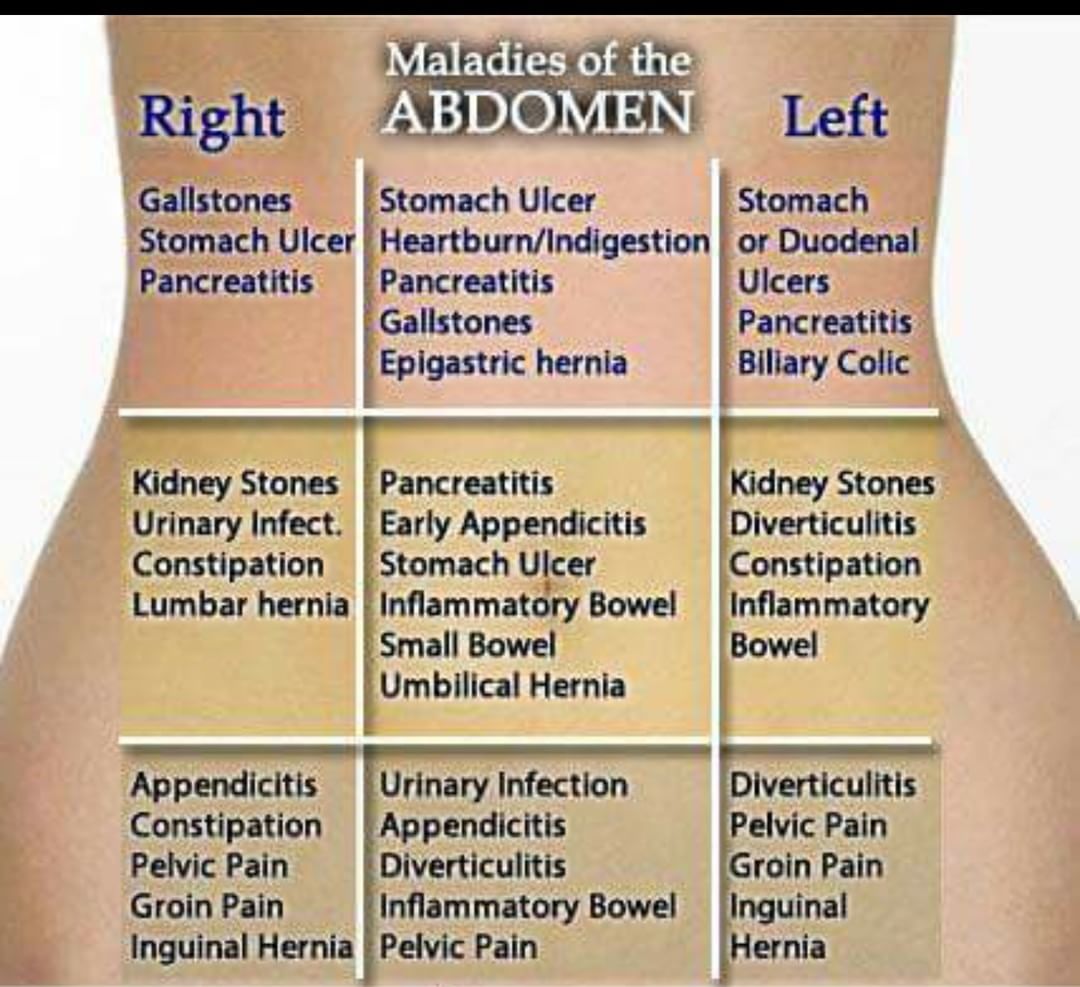



 1 What is Helicobacter pylori infection?
1 What is Helicobacter pylori infection?

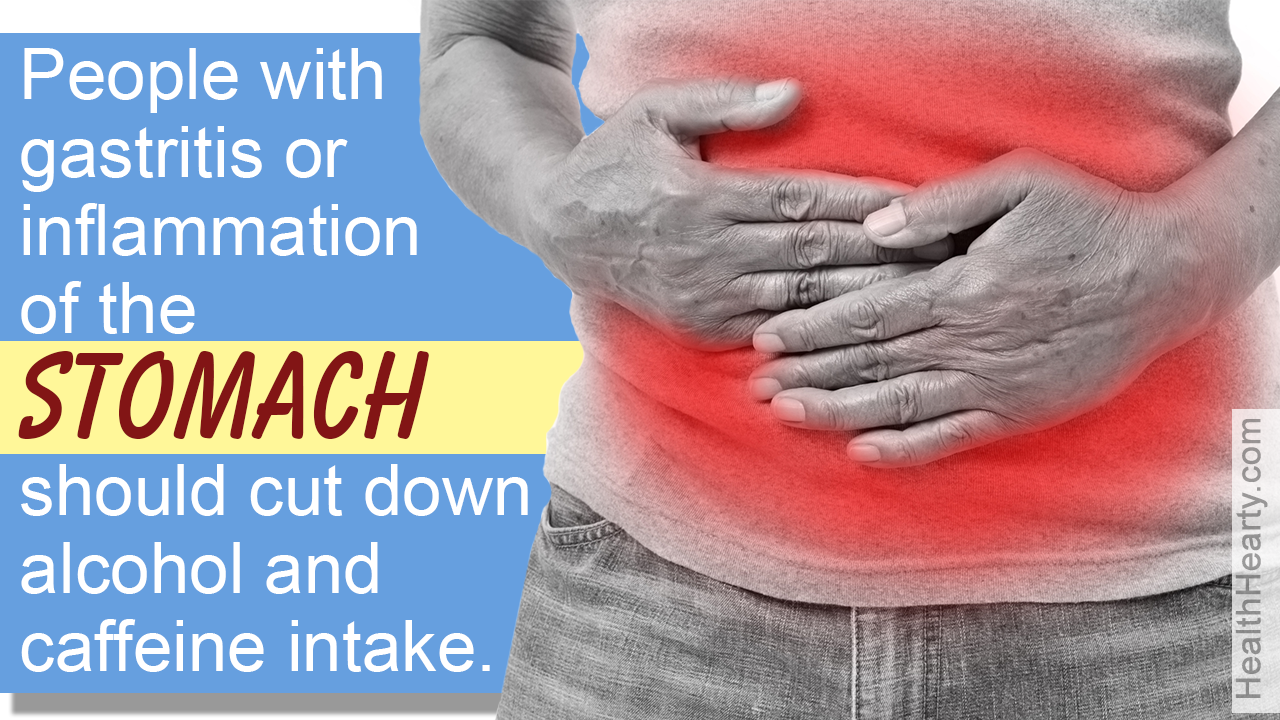 It is characterized by irregular breathing, weakness, dizziness, blood in the vomit and stool, black stools, pallor of the skin. If these symptoms appear, you should immediately seek medical help.
It is characterized by irregular breathing, weakness, dizziness, blood in the vomit and stool, black stools, pallor of the skin. If these symptoms appear, you should immediately seek medical help. For example, H. pylori-associated gastritis increases the risk of gastric mucosal adenocarcinoma and lymphoma.
For example, H. pylori-associated gastritis increases the risk of gastric mucosal adenocarcinoma and lymphoma. Alcohol most often provokes acute gastritis.
Alcohol most often provokes acute gastritis.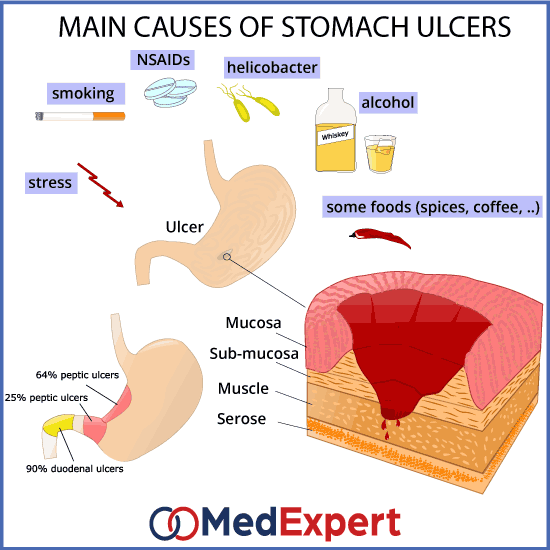 Autoimmune gastritis can also be associated with vitamin B12 deficiency.
Autoimmune gastritis can also be associated with vitamin B12 deficiency.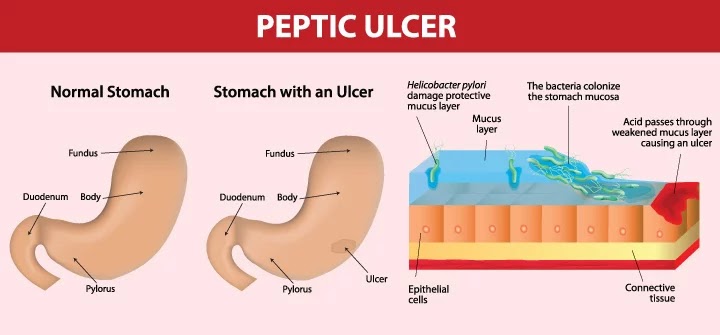 Hyperemia is accompanied by edema, this is a sign of the development of inflammation.
Hyperemia is accompanied by edema, this is a sign of the development of inflammation.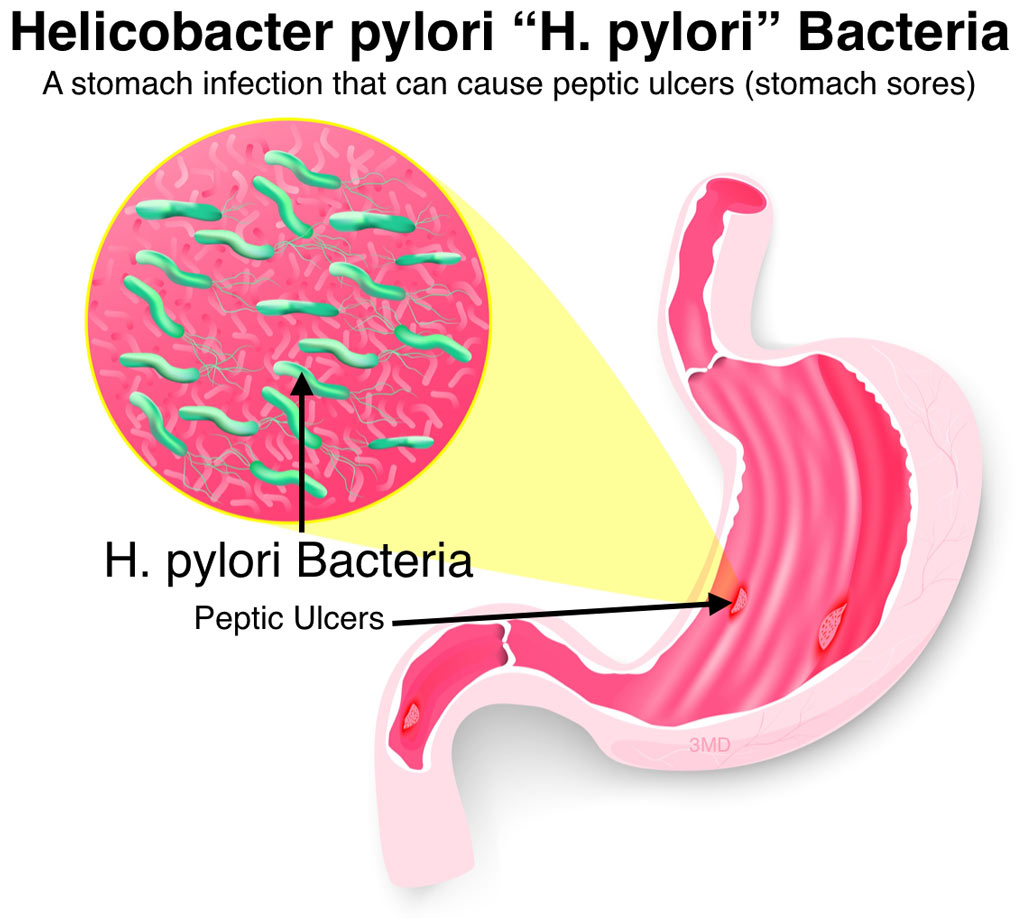 pylori.
pylori.